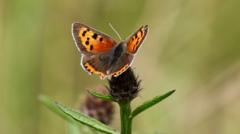Could a Bird's Nest Delay Construction of the Fire Training Centre?

Challenges in Developing the £37 Million Fire and Rescue Training Centre in North Wales
The proposed development of a £37 million fire and rescue training centre in North Wales has encountered some unexpected challenges. A nest of little ringed plovers, a protected species, has been discovered at the St Asaph Business Park site, temporarily halting initial site clearance. This situation not only highlights the need for environmental considerations in construction projects but also raises questions about the balance between development and wildlife preservation.
As environmental regulations become increasingly stringent, developers must navigate the complexities of wildlife protection. The presence of these nesting birds could delay the project by several weeks, with daily monitoring in place to assess the situation. The Local Democracy Reporting Service has reported that while quiet, manual work is permitted in certain areas of the site, any machinery-based activity is strictly prohibited until the birds have fledged.
The Impact of Protected Species on Development Projects
The discovery of little ringed plovers at the proposed site is a reminder of the legal obligations developers face when it comes to wildlife protection. It is illegal to intentionally or recklessly disturb any wild bird while it is nesting or building its nest. The project was already facing delays due to the presence of great crested newts, another protected species, which had previously hampered progress.
Such situations are not uncommon in the construction industry, especially for projects that involve significant land alteration. The need for ecological assessments and mitigation strategies has become a critical part of the planning process. Developers must work closely with environmental agencies to ensure compliance, which can lead to delays and increased costs.
Design and Features of the Proposed Training Centre
Despite the setbacks, the fire and rescue training centre is set to be a state-of-the-art facility designed to meet modern training standards. Assistant Chief Fire Officer Justin Evans presented the proposal to the North Wales Fire and Rescue Authority, emphasizing the inadequacies of current facilities. The new centre aims to provide a comprehensive training experience for firefighters and other emergency responders.
The proposed training centre will feature:
- Classrooms for theoretical instruction
- An incident command suite for strategic training
- Breathing apparatus and decontamination facilities
- Realistic fire training zones
- Road traffic collision training areas
- Designated space for multi-agency exercises
These features are designed to provide firefighters with practical, real-world training scenarios that enhance their skills and preparedness. The need for such a facility has become increasingly clear, as outdated training methods can hinder response effectiveness in emergency situations.
Future of the Project and Community Impact
While the situation with the little ringed plovers presents a temporary setback, officials remain optimistic about the project's future. The fire and rescue training centre is expected to begin construction in 2027, with a commitment to ensuring that all environmental regulations are adhered to. The North Wales Fire and Rescue Authority has already granted "in-principle approval" for the business case, demonstrating strong support for the initiative.
The development of this training centre is expected to have significant benefits for the local community and the wider region. Improved training facilities will not only enhance the skills of firefighters but also ensure a more effective emergency response system. In times of crisis, having well-trained personnel can save lives and minimize damage.
Balancing Development and Environmental Stewardship
The situation surrounding the proposed training centre underscores the ongoing challenge of balancing development needs with environmental stewardship. As society increasingly prioritizes sustainability, developers must adopt best practices that consider the ecological impact of their projects. This includes conducting thorough environmental assessments and engaging with local wildlife protection agencies.
As construction continues to evolve, the integration of green building practices and wildlife conservation will become more prominent. Developers who embrace these principles can not only avoid delays but also contribute positively to their communities and the environment.
FAQs
What are little ringed plovers, and why are they protected?
Little ringed plovers are small shorebirds known for their distinctive black and white head patterns. They are protected under various conservation laws due to their declining populations and specific habitat requirements. Disturbing their nesting sites can lead to legal consequences for developers.
How can developers avoid delays due to wildlife issues?
Developers can minimize delays by conducting comprehensive environmental assessments early in the planning process. Engaging with environmental agencies and adopting best practices for wildlife conservation can help identify potential issues before they arise, ensuring smoother project timelines.
What features will the new fire training centre include?
The new fire training centre will include classrooms, an incident command suite, breathing apparatus and decontamination facilities, realistic fire training zones, and dedicated spaces for multi-agency exercises. These features are designed to enhance the training experience for firefighters and improve emergency response capabilities.
The journey of developing a fire and rescue training centre is a complex interplay of community needs, environmental responsibilities, and modern training requirements. As we navigate these challenges, it prompts us to consider: How can we better harmonize development with environmental preservation for future projects? #FireSafety #WildlifeConservation #CommunityDevelopment
```Published: 2025-07-25 12:40:12 | Category: wales



